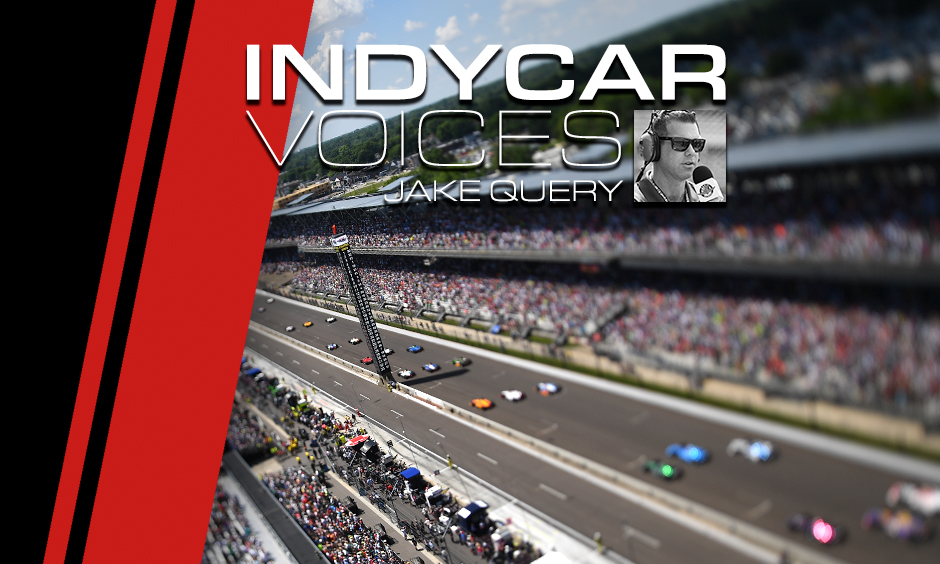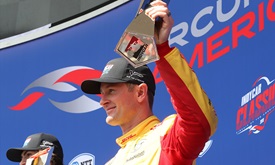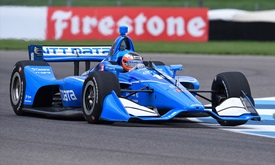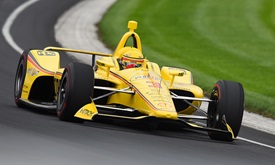Annual rite of spring awakening in Indy, #ThisIsMay at last
APR 30, 2019
The psychological transformation begins every year on Memorial Day. Yes, the day’s primary purpose is astutely observed: paying homage to those men and women who have given their lives, unselfishly and without fear, to have allowed us to witness the day before, as free men and women, the world’s greatest sporting event.
As the sun sets on its day of reflection, as the final thank you is administered at the Indianapolis 500 Victory Celebration, the countdown begins. I start thinking about the NEXT Indianapolis 500.
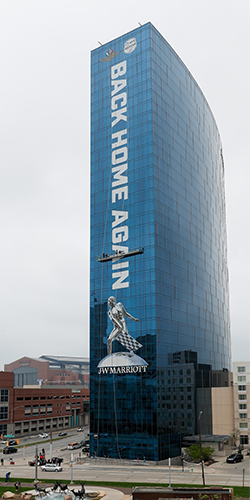 It’s always been that way for me, a kid of the ‘70s and ‘80s who grew up in the city that wore the name of the most famous auto race on the planet. Each and every year, I’d sit in the grandstands – usually in the Turn 2 Southeast Vista – and marvel at the collection of humanity. The hats. The coolers. The colors. The people. As far as my wide eyes could see. The people.
It’s always been that way for me, a kid of the ‘70s and ‘80s who grew up in the city that wore the name of the most famous auto race on the planet. Each and every year, I’d sit in the grandstands – usually in the Turn 2 Southeast Vista – and marvel at the collection of humanity. The hats. The coolers. The colors. The people. As far as my wide eyes could see. The people.
Each year, I’d have the same juxtaposition of melancholic anticipation. After that day, we’d all have to wait another year. My mind began placing me there within 24 hours.
My hometown was less than understanding of my racing mind. The dog days of summer would eventually transform to long, icy winters. Stark contrasts to the vapors of May heat I’d annually see vanish, broken by the burst of a car slicing through them at 220 mph. Each year, after the holidays, blizzards and rainfall of April, it would happen. Indianapolis, Indiana, would come roaring back to life, its signatures of late spring re-emerging to announce May was again upon us. Each year, the city awakened from its solstice slumber, ready to again stage the proudest civic celebration in the land.
Indianapolis native Kurt Vonnegut Jr., the son of an architect who went on to become one of the most influential authors of his era, once said our mutual hometown was “364 days of miniature golf, and then the Indy 500 again.” There was a lot of truth to that at the time, with our fair city absent an NFL team until 1984 or a truly competitive and nationally relevant NBA franchise until another 10 years after that. We always had “the 500.”
To grow up in this town is to have known that, in those days, much of school projects and lesson plans centered around the race. My mom still has tucked away the race car and checkered flag art projects I completed each year of elementary school. The upbringing of Mario Andretti, Teo Fabi, Jackie Stewart or Arie Luyendyk were incorporated into lesson plans to educate us on cultures and languages from faraway lands.
You knew how many races your parents had attended, you learned of work ethic from stories of your grandparents selling Indy 500 programs or sodas or race-themed newspapers. Virtually everyone had a favorite great aunt or uncle who dwelled near Indianapolis Motor Speedway, providing the comforting security of a guaranteed parking spot. It was all just part of living in Indianapolis.
Things have obviously changed since then. The skyline four miles to the east of the Speedway water tower now proudly identifies Indianapolis as one of the country’s established cities. Lucas Oil Stadium has housed Peyton Manning, Andrew Luck and a Super Bowl. The Colts’ original home (the Hoosier/RCA Dome) has been replaced by one of America’s biggest convention centers. The NBA All-Star Game will soon play in an arena whose shadows are dotted by hotels, condominiums and high-rise apartments.
Indianapolis is all grown up.
Yet, even as a proud adult, this city still returns to its ways of our parallel smaller years.
The April rains (hopefully) subsiding, the clearing skies shine light on the city’s annual
transformation: the physical one.
Checkered flags begin flying over doorways and in front lawns. The Chevrolet Corvette Stingray IPL 500 Festival Parade cars can be spotted in traffic. The bleachers start appearing on Meridian and Pennsylvania streets, awaiting the accompaniment of crowds for the parade the day before the race.
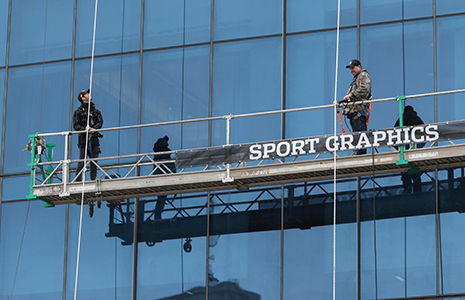 Meridian and Pennsylvania, among others, will temporarily surrender their names, as street signs go up downtown to pay tribute to the drivers who will attempt to make this year’s race field of 33. Installation was completed Tuesday morning of the colossal graphic on the exterior the JW Marriott welcoming fans to Indianapolis, this time utilizing two sides of the landmark luxury hotel’s exterior. 2016 Indy 500 winner Alexander Rossi (shown at left on the scaffolding) applied the final touches to the vinyl graphic that extends 290 feet on one spine of the building and sits majestically 330 feet above street level on the main façade.
Meridian and Pennsylvania, among others, will temporarily surrender their names, as street signs go up downtown to pay tribute to the drivers who will attempt to make this year’s race field of 33. Installation was completed Tuesday morning of the colossal graphic on the exterior the JW Marriott welcoming fans to Indianapolis, this time utilizing two sides of the landmark luxury hotel’s exterior. 2016 Indy 500 winner Alexander Rossi (shown at left on the scaffolding) applied the final touches to the vinyl graphic that extends 290 feet on one spine of the building and sits majestically 330 feet above street level on the main façade.
It serves as a giant-sized reminder of the prize that awaits the winner of the 103rd Running of the Indianapolis 500 presented by Gainbridge in just 26 days.
There are so many more things for which Indianapolis is recognized today than yesteryear, but the Indianapolis 500 is, and always will be, its paramount identity.
The time has come. The city no longer has to awaken, as even the cold and ice can’t stave Indy’s year-round activity. Yet, in May, the time that Indianapolis once performed its annual bloom, we now simply return to our roots.
It’s May. The greatest month in my favorite city in the world.
Start your engines.
(Veteran broadcaster Jake Query is a member of the Advance Auto Parts INDYCAR Radio Network team and offers his musings regularly on IndyCar.com.)










